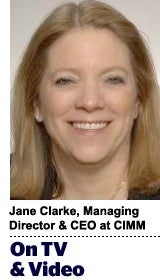
"On TV And Video" is a column exploring opportunities and challenges in advanced TV and video.
Today’s column is written by Jane Clarke, managing director and CEO at the Coalition for Innovative Media Measurement (CIMM).
Thanks to the glaring lack of standardization across the industry, TV attribution providers working with advertisers and agencies offer various approaches, relying on different modeling techniques and applying disparate data sources to reach different conclusions and recommendations for marketers.
As a result, any two TV attribution providers working on the same campaign are likely to share wildly different results that may drive dramatically different business decisions.
Right now, most TV attribution providers operate in a black box mode to protect their “secret sauce” that might give them a leg up against competitors. I understand that desire, but with so much secrecy we don’t know which process is the most precise, which data sets represent which consumers or, ultimately, which outcomes can be trusted.
A number of factors contribute to this messy, apples-to-oranges TV attribution ecosystem. Many of the issues lie within the data that are used (ranging from the ad occurrence data to the TV viewing exposure data and even to the “outcomes” data), but also the data-matching techniques and modeling approaches (which may have different attribution windows, adstock, baselines, incremental sales, etc.) that are employed.
Therefore, we need to study existing TV attribution approaches now to bring transparency and learn what drives the difference in results so that we can begin to develop best practices for attribution.
CIMM and the 4A’S Media Measurement Task Force are partnering with Janus Strategy and Insights and Sequent Partners to study how different TV data inputs impact attribution results. The goal is to begin to define best practices for better representation of television in attribution models and increase confidence in this important new area of measurement.
As part of the study, we are looking at the difference in attribution results from six national, linear television campaigns that aired in 2019 to compare ad occurrence data sources, TV exposure data sources and delivery across data providers. We’ll also glean insights into how different the campaign schedules provided by leading occurrence data sources are; if occurrences are currently over or undercounted; the differences in viewership data from different TV data sources, including set-top box data, smart TV data and combinations of both; and how the differences impact model lift estimates and the decisions marketers will make.
CIMM members are particularly interested in bringing more transparency and best practices, which can hopefully lead to greater confidence, trust and reliance on these new methods by marketers and media companies alike.
Analyzing ad occurrence data from Hive, iSpot, Kantar and Nielsen and television exposure data from 605, Alphonso, Ampersand, Comscore, Nielsen, Samba, TVadSync, TVSquared and VideoAmp may not provide all of the answers that we are seeking. But it will be a good place to start to determine some best practices for attribution model television data inputs.
The industry will benefit from having an understanding of what the current marketplace looks like. However, this is only the beginning. We need to focus subsequent research on outcome data, data matching techniques and optimal modeling approaches, along with combining TV and digital exposure data.
But, let’s take our TV attribution input “baby steps” first. By looking at ad occurrences (schedules) and exposure data (ratings and delivery), we can begin to unpack what drives the difference in attribution results.
Follow CIMM (@CIMM_NEWS) and AdExchanger (@adexchanger) on Twitter.
"TV" - Google News
February 11, 2020 at 12:05PM
https://ift.tt/31HyZa9
It's Key To Study Existing TV Attribution Practices - AdExchanger
"TV" - Google News
https://ift.tt/2T73uUP
Shoes Man Tutorial
Pos News Update
Meme Update
Korean Entertainment News
Japan News Update
Bagikan Berita Ini
















0 Response to "It's Key To Study Existing TV Attribution Practices - AdExchanger"
Post a Comment